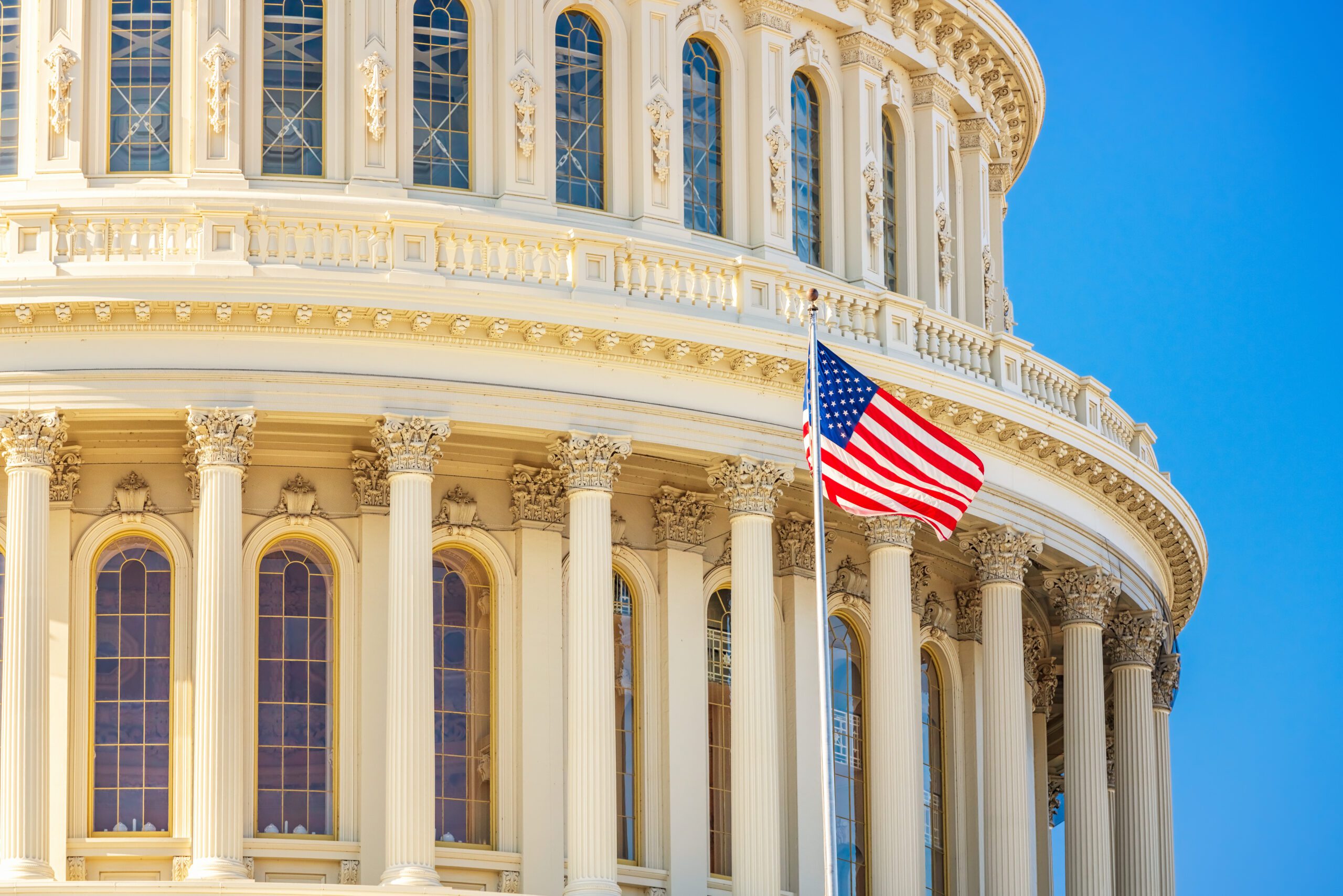House Bipartisan Tax Deal: 5 Key Facts
The U.S. House of Representatives has passed a highly anticipated bipartisan tax deal. The TaxA tax is a mandatory payment or charge collected by local, state, and national governments from individuals or businesses to cover the costs of general government services, goods, and activities.
Relief for American Workers and Families Act now awaits action in the Senate.
The tax deal would temporarily (through 2025) extend three business provisions established as part of the 2017 Tax Cuts and Jobs Act (TCJA)—bonus depreciationBonus depreciation allows firms to deduct a larger portion of certain “short-lived” investments in new or improved technology, equipment, or buildings in the first year. Allowing businesses to write off more investments partially alleviates a bias in the tax code and incentivizes companies to invest more, which, in the long run, raises worker productivity, boosts wages, and creates more jobs.
, research and development (R&D) expensing (only for domestic R&D), and a more generous interest limit.
The package would also temporarily provide a more generous child tax creditA tax credit is a provision that reduces a taxpayer’s final tax bill, dollar-for-dollar. A tax credit differs from deductions and exemptions, which reduce taxable income, rather than the taxpayer’s tax bill directly.
(CTC) by adjusting the refundable and base CTC amounts for inflationInflation is when the general price of goods and services increases across the economy, reducing the purchasing power of a currency and the value of certain assets. The same paycheck covers less goods, services, and bills. It is sometimes referred to as a “hidden tax,” as it leaves taxpayers less well-off due to higher costs and “bracket creep,” while increasing the government’s spending power.
, providing an income lookback when calculating the credit value, and phasing in the refundable CTC maximum faster for households with multiple children.
Paired with these changes are other items, including a tax agreement with Taiwan and an increase in the generosity of low-income housing tax incentives. In all, the tax cuts add up to $78 billion over the 10-year budget window, paid for by tightening enforcement and making other changes to the COVID-era employee retention tax credit.
Here are five things to know about the tax deal:
1. Permanent Improvements to Cost RecoveryCost recovery is the ability of businesses to recover (deduct) the costs of their investments. It plays an important role in defining a business’ tax base and can impact investment decisions. When businesses cannot fully deduct capital expenditures, they spend less on capital, which reduces worker’s productivity and wages.
Would Deliver the Most Bang for the Buck
Because the changes to R&D expensing, bonus depreciationDepreciation is a measurement of the “useful life” of a business asset, such as machinery or a factory, to determine the multiyear period over which the cost of that asset can be deducted from taxable income. Instead of allowing businesses to deduct the cost of investments immediately (i.e., full expensing), depreciation requires deductions to be taken over time, reducing their value and discouraging investment.
, the net interest limitation, and the child tax credit are temporary, they do not have a lasting impact on businesses’ or individuals’ investment or work decisions. While the three business provisions are in effect, they will temporarily boost investment incentives, but that boost will quickly fade as the policies expire, resulting in no long-run benefit.
If bonus deprecation and R&D were instead made permanent, they would boost growth significantly. Of the 11 major expiring tax cuts within the TCJA, bonus depreciation and R&D deliver the most bang for the buck—together they would lift GDP by 0.5 percent over the long run. Temporary tax policy leaves that economic growth on the table.
2. The Child Tax Credit Structure Largely Remains the Same
The tax deal increases the amount of credit available as a refund over and above tax liability due, phases that refundable amount in faster, and permits taxpayers to use earned income from the prior year to calculate their refundable tax creditA refundable tax credit can be used to generate a federal tax refund larger than the amount of tax paid throughout the year. In other words, a refundable tax credit creates the possibility of a negative federal tax liability. An example of a refundable tax credit is the Earned Income Tax Credit.
. It retains the same basic structure set in place by the TCJA: to qualify for the credit, taxpayers must earn more than $2,500, have an individual taxpayer identification number, and provide Social Security numbers for qualifying children, plus the credit continues to phase out as taxpayers earn above $400,000 for joint filers or $200,000 for single filers.
One estimate from scholars at the American Enterprise Institute explores the effects of allowing an income lookback for calculating the CTC on a permanent basis, finding it would reduce employment by 150,000 jobs on net. As other analyses explain, however, the lookback would not create a permanent incentive to leave the workforce, but rather an incentive to cycle in and out of the workforce from one year to the next.
The Joint Committee on Taxation (JCT) estimates the lookback accounts for less than $0.8 billion of the $10.7 billion cost of the CTC expansion in 2025, which suggests the lookback has a relatively small impact.
JCT also estimates that the effects of the temporary changes to the CTC included in the deal will be positive overall, most likely due to the faster phase-in of the credit for families with multiple children: “the proposed expansion of the child tax credit on net increases labor supply” but the increase is too small to be significant.
3. The Deal Would Not Exacerbate Inflation
Because the package is revenue neutral over the budget window, it is not likely to have any substantial effect on inflation. But the package does cut taxes on net in the first two years, creating a concern that it risks exacerbating inflation. For example, the tax deal would reduce revenue by $169 billion in 2024 and $46 billion in 2025, while from 2026 through 2033 it would raise revenue each year.
That revenue pattern is largely attributable to changing the timing of when businesses deduct their investments, and to the extent that the faster deductions boost investment and the capital stock, though temporary, that would counter an inflationary effect to some degree by increasing supply and production. The expectations of higher taxes as the payfors take effect will further counter inflationary pressures in the near term.
To the extent the policies are extended beyond 2025 by some later legislation, at that time it would again be wise for lawmakers to prioritize tax changes that boost investment incentives and find additional legitimate and sound payfors.
4. Clamping Down on the Employee Retention Credit Makes Sense as an Offset
To offset the costs associated with the business and child tax credit provisions, the package tightens the enforcement rules surrounding the pandemic-era employee retention tax credit (ERTC). The ERTC has been plagued with fraud from unscrupulous promoters encouraging businesses to improperly claim the credit. Fraud has significantly hiked the fiscal cost of the program: in 2020 the credit was originally projected to cost $55 billion over ten years, but it now will rack up nearly $550 billion in long-term costs if left unaddressed.
The package ends new ERTC claims as of January 31, increases penalties for ERTC fraud, and extends the associated statute of limitations. Taken together, the changes will save about $78.8 billion over ten years.
Some critics argue that Congress should not rely on scored revenue from a failed program. While it would have been better if Congress avoided this mess to begin with, that does not change the fact that greater enforcement will bring in real money today that otherwise would not be collected. If offsets do not count because they should have been enacted earlier, we’d have very few offsets to consider more generally.
The fact that policymakers chose on a bipartisan basis an offset that does not contain a budget or timing gimmick is progress. As our deficit situation worsens, we should be encouraging more offsets like this from Congress.
5. Retroactivity Creates No Growth Incentives but Helps Small Businesses
The package provides retroactive tax cuts for businesses and families. For businesses, R&D expensing is provided for 2022 and 2023, 100 percent bonus expensing is provided for 2023, and the tighter limitation on interest deductions is reversed for 2022 and 2023. For families with children, the bill provides a faster CTC phase-in for families with multiple children and a $1,800 refundable CTC limit for 2023.
Retroactive tax changes do not change forward-looking economic incentives; taxpayers cannot go back in time to change their behavior. Retroactivity should be avoided or minimized if policymakers wish to enact sound tax policy.
With that general rule in mind, in the case of R&D expensing and bonus depreciation, many small businesses struggled with cash flow and liquidity challenges when the provisions expired or phased down. With good reason, many small businesses expected Congress to address the expirations, especially the unprecedented requirement to begin amortizing R&D expenses beginning in 2022.
R&D expensing and 100 percent bonus depreciation accelerate the timing of when firms take deductions. Retroactive depreciation deductions provide deductions to firms on a quicker timeframe than they would otherwise be allowed, reducing the tax burden on past investments that results from inflation and the time value of money. While retroactive depreciation changes are not ideal, they are distinct from retroactive changes that reduce taxes paid and are not changes in the timing of tax payments.
Stay informed on the tax policies impacting you.
Subscribe to get insights from our trusted experts delivered straight to your inbox.
Subscribe
Share






